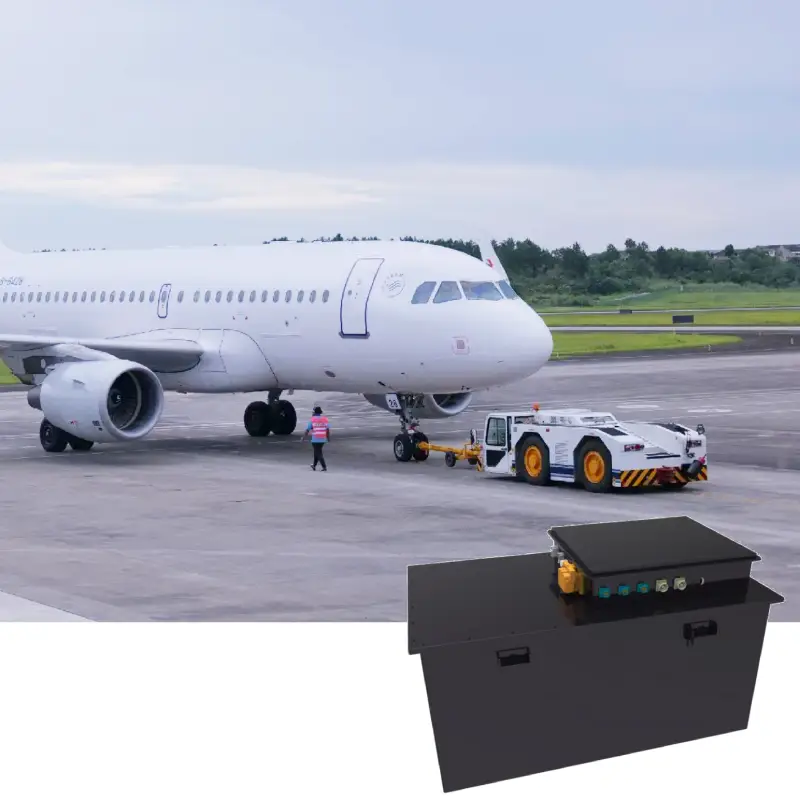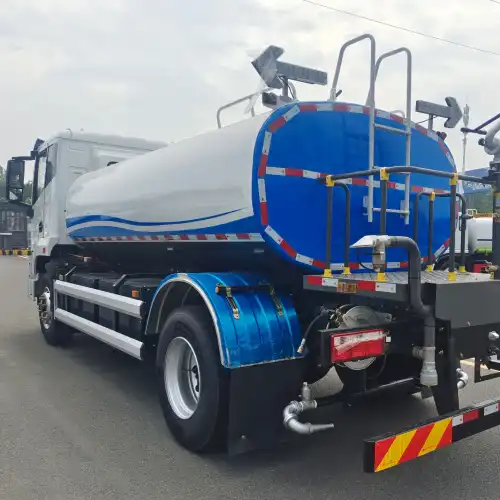Case Study: Electric Street Sweeper for Urban Cleaning
Electric Street Sweeper: Leading the Way in Urban Sanitation Electrification Introduction: Electrification Is Reshaping Urban Sanitation As cities around the world prioritize sustainability, the transition to electric vehicles (EVs) has become increasingly significant. One key player in this movement is the electric street sweeper, a revolutionary piece of sanitation equipment that combines powerful performance with environmental responsibility. This electric road sweeper represents a game-changing step forward in municipal cleaning technology, offering a cleaner, quieter, and more efficient alternative to traditional diesel-powered models. This case study highlights a production electric street sweeper model, demonstrating how electrification is transforming the industry — and how we can support street sweeper manufacturers with tailored electrification solutions, including high-performance motors, battery systems, and charging technologies. A Benchmark in Electric Street Sweeper Design The electric sweeper featured here represents a new generation of urban cleaning equipment: Dimensions: 9270 × 2490 × 3150 mm Curb weight: 8.05 tons Gross vehicle weight: 18 tons Sweeping width: Standard 4.1 meters; Deep-cleaning mode 2.4 meters Tank capacity: 8.5 m³ freshwater, 7.5 m³ wastewater Functions: Full sweeping and washing, one-sided sweeping, deep cleaning, winter water-blow, high-pressure tank self-cleaning This electric sweeper is engineered for high performance in city streets, municipal squares, industrial sites, and more, delivering superior cleaning efficiency while reducing environmental impact. Core Electrification Technologies 1. High-Efficiency Electric Motor The electric street sweeper is powered by a permanent magnet synchronous motor, which offers 350 kW peak power (about 476 horsepower), ensuring strong and reliable performance under various urban conditions. The motor operates with a high efficiency rate of 98%, converting electrical energy into mechanical power with minimal loss. Key benefits of this electric motor include: Mud and condensation resistance: Ensures the motor stays protected even in challenging working environments. 8-year maintenance-free bearings: Reduces maintenance costs and extends the lifespan of the vehicle. IP68 & IP6K9K protection levels: The motor is protected against water, dust, and debris, allowing it to perform reliably even under extreme weather conditions, including heavy rain and floods. 2. Multi-In-One Controller for Optimized Energy Efficiency This electric street sweeper is equipped with a carbon-silicon (SiC) multi-in-one controller. This state-of-the-art controller is designed for high efficiency and low energy consumption, and it offers a host of advantages: Energy savings: The system boosts overall energy efficiency by 8%, allowing the vehicle to run longer on a single charge. Reduced failure rates: The failure rate is reduced by 25%, ensuring more reliable performance. Weight reduction: The controller weighs 50% less than traditional models, helping to improve the vehicle’s overall energy efficiency and performance. Together, these elements combine to make the electric road sweeper a highly reliable and efficient vehicle for urban sanitation needs. 3. Powerful and Efficient EV Battery Design At the heart of this electric sweeper is a high-capacity EV battery system that ensures both longevity and performance. The electric street sweeper’s battery is housed behind the driver’s cabin and is designed for long-lasting power: Rated voltage: 589.26V Rated capacity: 456Ah Total energy capacity: 268.7 kWh This system provides excellent energy density, achieving 175Wh/kg, which allows for longer operational times between charges. Moreover, the battery has been engineered for durability with an IP68+IP6K9K protection level, allowing it to withstand extreme conditions — including up to 72 hours submerged under 2 meters of water. 4. Fast Charging Capabilities The electric street sweeper incorporates fast-charging technology that dramatically reduces downtime: Single gun fast charge: 300A Dual gun fast charge: 600A This unique charging system increases the charging speed by 20%, ensuring the sweeper is ready to return to work quickly, minimizing the interruptions to city cleaning operations. With the combination of fast charging and long-lasting battery capacity, this sweeper is built to tackle large-scale urban cleaning projects without requiring extensive downtime. Environmental and Economic Impact Sustainability Benefits The electric street sweeper is a key part of the ongoing effort to electrify municipal vehicles and reduce urban pollution. Unlike traditional fuel-powered sweepers, which emit harmful pollutants and contribute to greenhouse gases, this electric sweeper has: 10% of the energy consumption compared to a diesel-powered model. A significant reduction in carbon emissions, supporting cities in their sustainability efforts. Cost-Effectiveness Additionally, the operating costs are significantly lower than those of diesel vehicles: Lower fuel costs due to the use of electricity instead of diesel. Reduced maintenance costs thanks to the maintenance-free bearings and robust motor design. The vehicle’s overall economic performance and long-term cost savings make it a highly attractive option for municipalities looking to upgrade their sanitation fleets without sacrificing performance. Partner with Us: Your Expert in Electric Street Sweeper Solutions With over 14 years of experience in the EV industry, we’ve helped more than 300 EV builders worldwide successfully deploy their projects — from electric trucks and buses to sanitation vehicles like electric sweepers. Our electrification solutions for street sweepers or other municipal vehicles include: Electric Powertrain Solution Electric Drive Motor The motor achieves a maximum efficiency of over 97%, with the system efficiency exceeding 90% in 90% of the operational range. 2m 72h extreme water-proof, sediment-proof structure, anti-condensation structure, long-life bearing and oil seal. Noise at full speed section of motor ≤72dB(A), linearity≤2dB(A). Lightweight design X-in-1 Integrated Controller Maximum efficiency>99% EMC reaches class 5 under no-load Functional safety level ASIL C Motor controller+steering controller+air compressor controller+DC/DC+high voltage power distribution Tailored EV Battery System Full system integration of battery Pack+BMS+BTMS+PDU Premium battery cells from top battery cell suppliers Excellent thermal management strategy for enhanced reliability Lightweight design with alumium alloy composites for battery box DC Fast Charging Solution Tailored solutions from project consulting, product delivery to after-sales support. Professional training for installation, operation, and maintenance. Free technical support throughout the product lifecycle for safe and efficiency operation 60 kW to 420 kW integrated DC fast chargers with CCS2 standard 80 kW to 400 kW integrated DC fast chargers with GB/T standard Power distribution system Charging operation management system, flexible user-friendly payment and charging options Security & monitoring system Fire safety system Other Solutions Onboard Charger Auxiliary Inverter Electric Power Steering Air Brake









